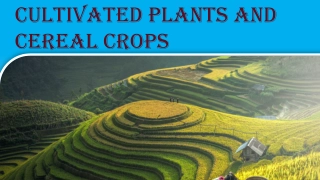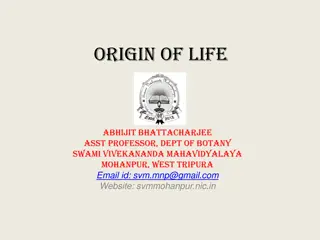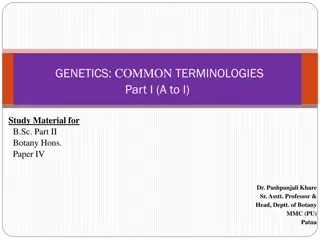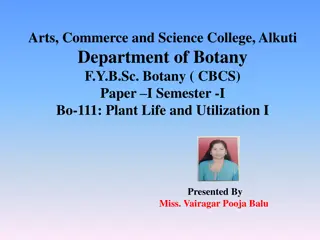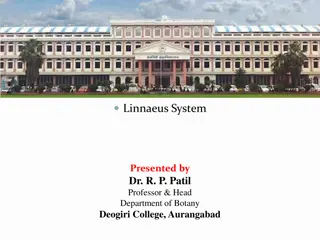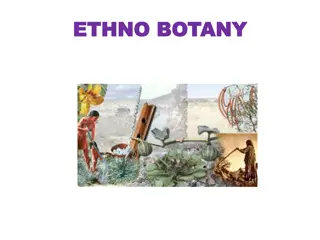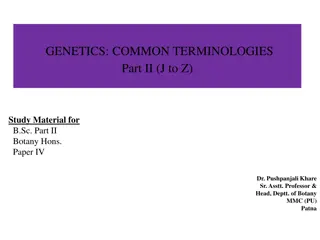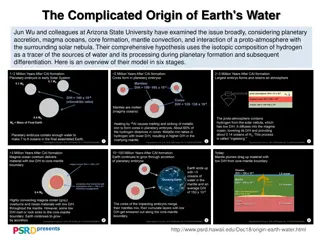Major Formation Types of the World by Dr. Zaryab Khalid - BS Botany Semester 7
This presentation by Dr. Zaryab Khalid explores the major formation types of the world in the field of community ecology. It delves into the classification of natural and cultural vegetations, the concept of formation classes and subclasses, and details the six natural formation classes along with examples at different hierarchical levels. The content provides insight into the different types of vegetation based on ecological processes, human activity, and climatic conditions.
Download Presentation

Please find below an Image/Link to download the presentation.
The content on the website is provided AS IS for your information and personal use only. It may not be sold, licensed, or shared on other websites without obtaining consent from the author. Download presentation by click this link. If you encounter any issues during the download, it is possible that the publisher has removed the file from their server.
E N D
Presentation Transcript
MAJOR FORMATION TYPES OF THE WORLD BY DR. ZARYAB KHALID CLASS: BS BOTANY SEMESTER: 7TH SUBJECT: COMMUNITY ECOLOGY
Introduction Formation: "A community type defined by dominance of given growth form in the uppermost stratum of the community or by the combination of dominant growth forms" Whittaker(1962)
Types of Formations Natural vegetation: "vegetation where ecological processes primarily determine specie composition and stand structure" Cultural vegtations: "vegetation with a distinictive structure,composition and development determined by regular human activity" Anthomorphically growing plant spp. A set of plant spp. growing spontaneously.
Formation class "A vegetation classification unit of high rank(1st level)defined by broad combination of dominant general growth forms adapted to basic range of moisture,temperature"
The six natural formation classes Mesomorphic tree vegetation Mesomorphic shrub & Herb vegetation Cryomorphic vegetation Xeromorphic woodland,scrub & grassland vegetation Hydromorphic vegetation Lithomorphic vegetation
Formation subclass: A vegetation unit of high rank(2nd level) defined by combinations of general dominat & diagnostic growth forms that reflects global macroclimatic aquatic conditions. For example: Tropical forest Cool semi-desert scrub & Grass land
Formations at 3rdlevel Temperate,boreal & Montane vegetation Temperate & Mediterranean vegetation



